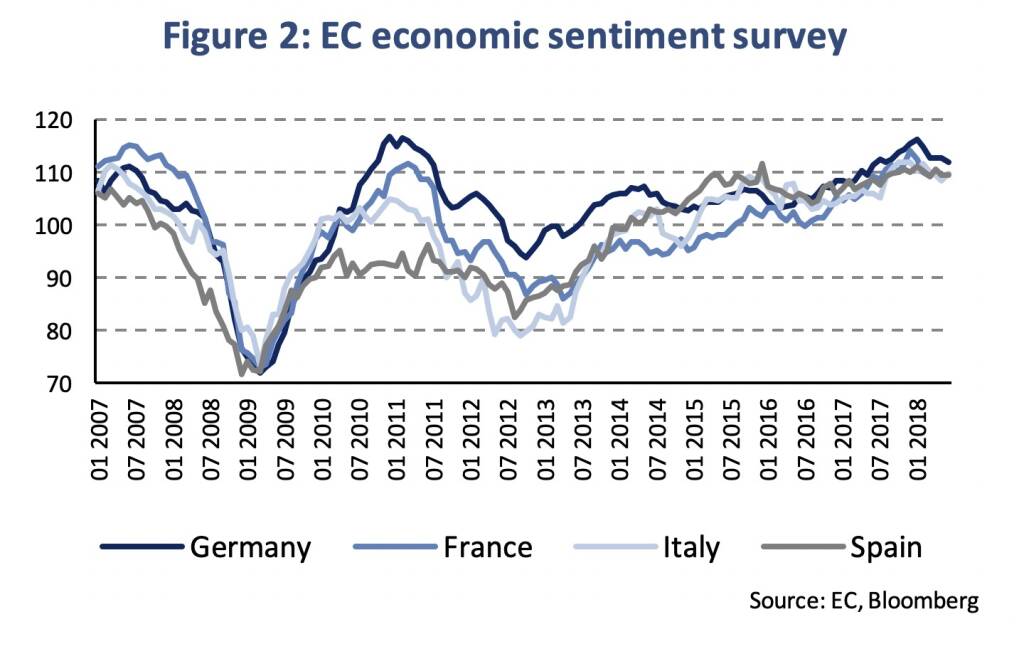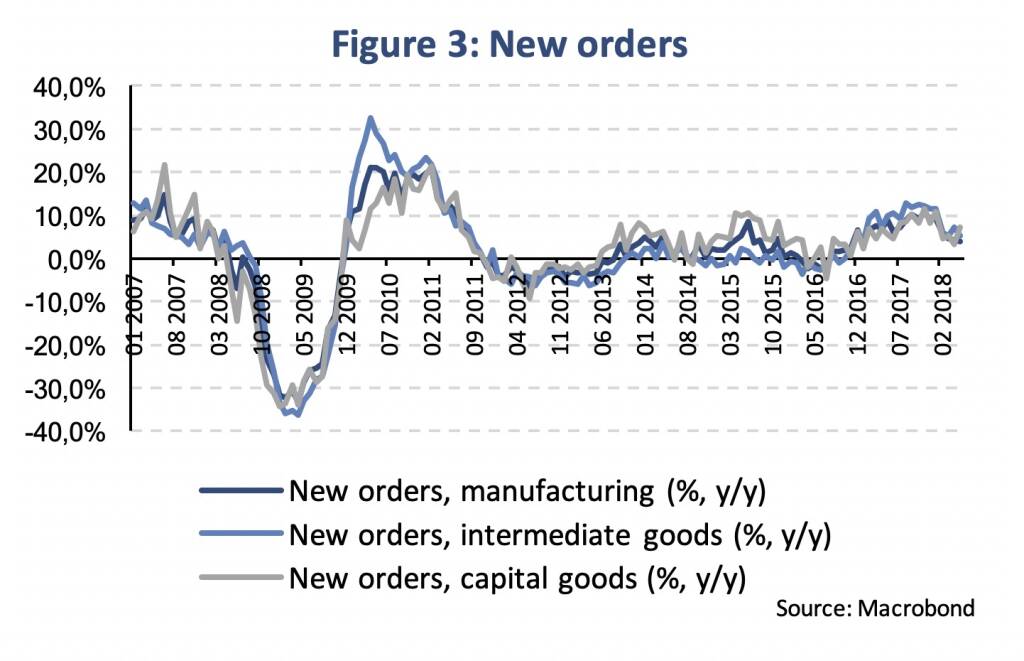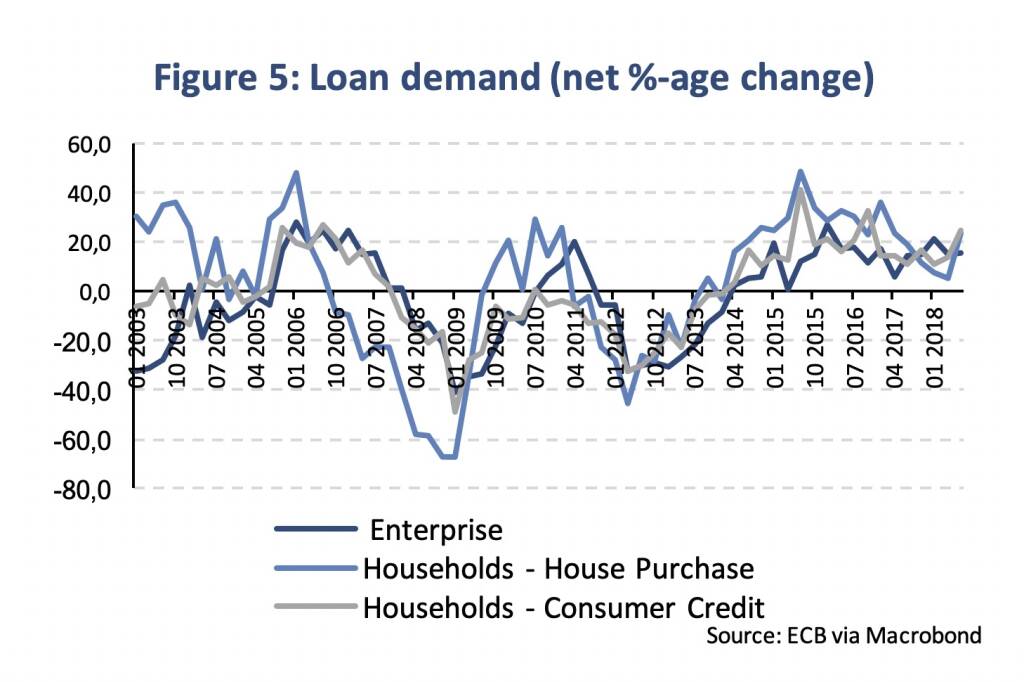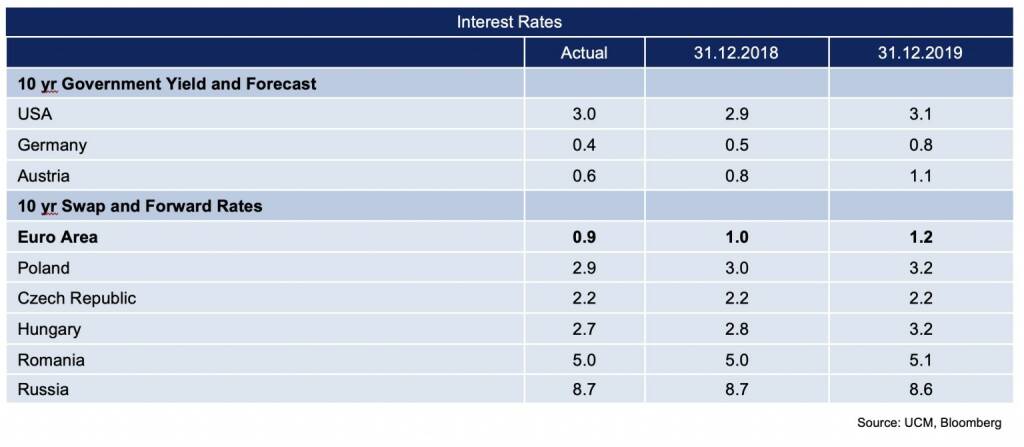Eurozone business cycle monitoring (Martin Ertl)
- Uncertainty increased recently amid conflicting signals.
- Survey data softened further in July, while financing conditions remain favorable.
- On Tuesday, the Q2 GDP release will add an important information.
Business cycle uncertainty has recently been increasing in the Euro Area. We observe downward signals from a number of cyclical indicators which conflict with a broad strength in macroeconomic trends. The first Eurostat Q2 GDP release on Tuesday 31st July will add another indication about the state of the business cycle. The most visible downward trend in time series comes from prominent survey data. The purchase managers surveys (PMI) – both contemporaneously correlated with GDP and forward-looking – have been losing momentum since January (Figure 1).
In July, the surveys for the manufacturing sector rebounded slightly in Germany (57.3) and France (53.1). The composite PMI index (including the manufacturing and services sectors) rose in Germany (55.2) and declined slightly in France (54.5). However, for the entire Eurozone, the composite PMI index fell in July (54.3). A level above the expansion threshold (at 50) indicates growth in the economy. Simply regressing GDP on the PMI index predicts a current quarterly GDP growth rate of 0.5 %.
The evidence from other survey data is quite similar. The prominent German ifo business survey has also slipped since end-2017 (including the release for July from last week). Similarly, the country-specific economic sentiment surveys from the European Commission have been slowing (Figure 2).
However, these indicators had reached multi-year highs at end-2017. The decline in the surveys imply greater uncertainty, that might have been related to the trade war rhetoric and protectionist measures. In H2 2017, the average quarterly growth rate of real Euro Area GDP averaged 0.7 %, while in Q1 2018 the economy grew by 0.4 %. The slowdown linked to a lower contribution from external trade, while domestic demand has been a stable growth driver.
High-frequency real activity data is released with a time lag. In May, the monthly industrial production rebounded (+2.4 % y/y) compared to April (+1.7 %), while remaining behind the average Q1 change (+3.1 %). Growth in retail sales was similar to Q1 (+1.4 %) and construction activity rebounded slightly in May (+1.8 %) after a slowdown in the preceding months (Q1: +2.5 %). New orders – released until May – give a forward-looking information, as ordered goods will enter production and/or sales subsequently (Figure 3). Manufacturing orders slowed in May (+4.0 %) compared to Q1 (+6.5 %), also intermediate goods orders (+5.1 % in May versus +7.6 % in Q1), while capital goods orders seem to stall (+7.3 % in May).
The real-time business cycle model that we primarily rely upon is informed by the described and more data. The now-cast currently estimates quarterly Q2 GDP growth at 0.3 %, hence, below the simple PMI estimate (0.5 %) as well as the current consensus (median) among forecasters recorded on Bloomberg (0.4 %).
We had argued that supply side capacity constraints might play a more and more important role and firms would increasingly have to invest increasing the productive base and the growth potential (UCM Weekly as of 16th July).
Financial conditions remain favorable according to the quarterly Bank Lending Survey (BLS), which was released last week by the ECB. Banks reported that credit standards continued to ease for loans to enterprises and loans to households for house purchase and consumer credit in the Q2 2018, while loan demand also increased across all loan categories, thereby continuing to support loan growth Figures 4 and 5 show the net percentage change of banks reporting tightening standards or positive loan demand).
While survey data has clearly been indicating a softening business cycle after strong conditions last year, economic growth is likely to remain on a decent path in the absence of further unexpected shocks. Bank lending conditions remain supportive for investment in case that the Euro Area economy hits capacity constraints.
Authors
Martin Ertl Franz Zobl
Chief Economist Economist
UNIQA Capital Markets GmbH UNIQA Capital Markets GmbH






Latest Blogs
» Börse-Inputs auf Spotify zu u.a. Verena Sp...
» SportWoche Podcast #129: Verena Spreitzer,...
» Wiener Börse Party #752: ATX stärker, Do&C...
» Wiener Börse zu Mittag stärker: Do&Co, AT&...
» Österreich-Depots: Weekend-Kommentar (Depo...
» Börsegeschichte 4.10.: Bitte wieder so wie...
» PIR-News: In den News: Uniqa, Erste Group,...
» Nachlese: SLG wird Partner bei kapitalmark...
» Börsepeople im Podcast S15/04: Stefan Kainz
» ATX-Trends: Wienerberger, AT&S, Polytec ...
Weitere Blogs von Martin Ertl
» Stabilization at a moderate pace (Martin E...
Business and sentiment indicators have stabilized at low levels, a turning point has not yet b...
» USA: The ‘Mid-cycle’ adjustment in key int...
US: The ‘Mid-cycle’ interest rate adjustment is done. The Fed concludes its adj...
» Quarterly Macroeconomic Outlook: Lower gro...
Global economic prospects further weakened as trade disputes remain unsolved. Deceleration has...
» Macroeconomic effects of unconventional mo...
New monetary stimulus package lowers the deposit facility rate to -0.5 % and restarts QE at a ...
» New ECB QE and its effects on interest rat...
The ECB is expected to introduce new unconventional monetary policy measures. First, we cal...
